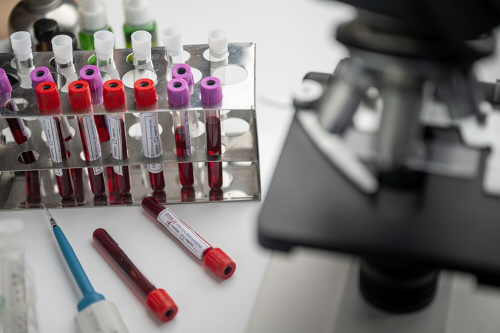Convalescent Plasma and Artificial Antibodies: Survivors as Saviours
恢复期血浆和人工抗体:康复者成为了人们的救星
During the flu pandemic of 1918-19 doctors at an American naval hospital developed a treatment which, according to the American Journal of Public Health, had “a decided influence in shortening the course of the disease and in lowering the mortality”.
据《美国公共卫生杂志》报道称,在1918年至1919年的流感大流行期间,美国一家海军医院的医生研发了一种能够“有效缩短疾病病程并降低患者死亡率”的治疗方法。
It involved clotting and then centrifuging blood from people who had got over the disease so as to separate out the antibodies it contained, then giving those antibodies to patients in dire need.
该方法是对处于恢复期的病人的血液进行采集和离心,进而分离出含有抗体的血浆,然后将其用于那些亟待治疗的患者。
Since then antibody-rich “convalescent plasma” (CP) has been used as a treatment for various diseases, including SARS and the pandemic strains of H1N1 and H5N1 influenza. Now covid-19 has joined the list.
从那时起,富含抗体的“恢复期血浆”被广泛用于治疗包括SARS以及H1N1和H5N1流感大流行在内的各种疾病。如今,新冠肺炎也位列其中。
A recent study in Wuhan found that severely ill covid-19 patients treated with CP did significantly better than patients matched with them by age, gender and severity of infection had done earlier in the epidemic.
最近在武汉进行的一项研究发现,相比疫情早期那些年龄、性别和病情相当的新冠肺炎患者,接受恢复期血浆治疗的重症患者的治疗效果明显要好一些。
Michael Joyner of the Mayo Clinic, which leads a CP research effort in America, expects randomised control trials to begin in a few weeks. They will not just look at CP’s potential as a treatment, but also as a prophylactic. If that worked, it would be a sort of halfway house on the road to a vaccine.
梅约医学中心的迈克尔·乔伊纳领导着美国一项有关恢复期血浆的研究计划,他预计将在几周内开始进行随机对照试验。他们不仅将恢复期血浆视为一种潜在的治疗手段,同时还将其视为一种预防手段。如果这种方法行之有效,那么它将为疫苗的研发奠定基础。

Even though CP donors get the other components of their blood – cells, platelets and the like – returned to them after the antibodies have been removed, the process is still something of a palaver, requiring a lot of medical attention. Despite the fact that various companies are trying to make a go of it, it is hard to see it scaling up all that far.
尽管在分离出抗体后,血液中的其他成分(血细胞、血小板等)会被输送回恢复期血浆捐献者的体内,但整个过程仍然十分繁琐,需要投入大量医护。虽然许多公司都在努力推进恢复期血浆的制备,但规模难以扩大。
But there is an alternative. Antibodies are proteins, and that means a bit of genetic engineering will allow cell lines at biotechnology and pharma companies to mass produce them. The resulting product should be less prone to contamination, more consistent, and easier to scale up than CP.
不过,还有另一种选择。抗体本质上是蛋白质,这意味着一些生物技术和制药公司能够通过基因工程技术对其进行大规模生产。由此得到的抗体相比恢复期血浆更不容易受到污染、更稳定、更易于实现规模化生产。
This approach has already been successful against Ebola. Regeneron, an American biotech company, developed a cocktail of three antibodies which recognised different parts of the protein’s coat.
这种方法已经成功地被用于对抗埃博拉病毒了。再生元公司(一家美国生物技术公司)研发了一种由三种抗体(可识别蛋白质外壳上的不同位点)组成的混合抗体。
Trials in the Democratic Republic of Congo showed this therapy to be better than remdesivir, a drug designed to block the Ebola virus’s reproduction which is now, as it happens, being tested as a medicine for covid-19.
据他们在刚果民主共和国进行的试验显示,其疗效优于瑞德西韦,瑞德西韦本是一种用于阻止埃博拉病毒复制的药物,目前正被用作治疗新冠肺炎的药物进行试验。
Regeneron is now making a pair of antibodies that target the SARS-CoV-2 spike protein. It hopes to have produced enough to start trials soon. As with CP, it is possible that such antibodies may temporarily confer immunity on the uninfected, as well as helping the infected fight the disease.
再生元公司目前正在研发一种针对新冠病毒突刺蛋白的抗体。该公司希望能够生产出足够的抗体,从而尽快开展试验。就像恢复期血浆一样,这种抗体或能暂时赋予未感染者以抵抗力,并帮助感染者与病魔作斗争。
英文、中文版本下载:http://www.yingyushijie.com/shop/source/detail/id/2268.html








